One of the best books I’ve read with my middle school students is A Long Walk to Water.
The book is based on the true story of Salva Dut, one of the “Lost Boys of Sudan” who went on to found Water for South Sudan: a remarkable organization that digs wells of clean water.
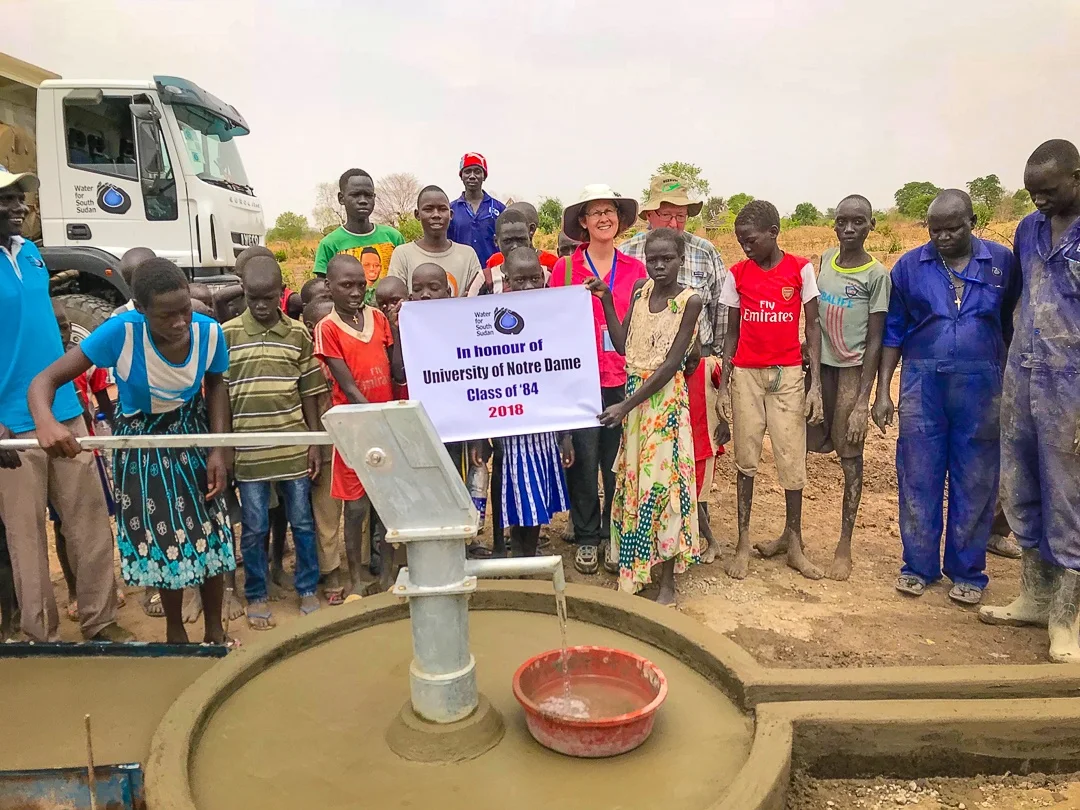
Thanks to an interview about the book, I connected with Anne Turner, an American woman who has become deeply involved with Salva Dut’s organization, and who recently traveled to South Sudan to see the wells herself!
I begged Anne to do this interview, since my students and I have been so curious to learn more about the work of WFSS, and what it looks like on the ground.
Teaching Traveling: Anne, tell us about your background, and how you became involved in Water for South Sudan.
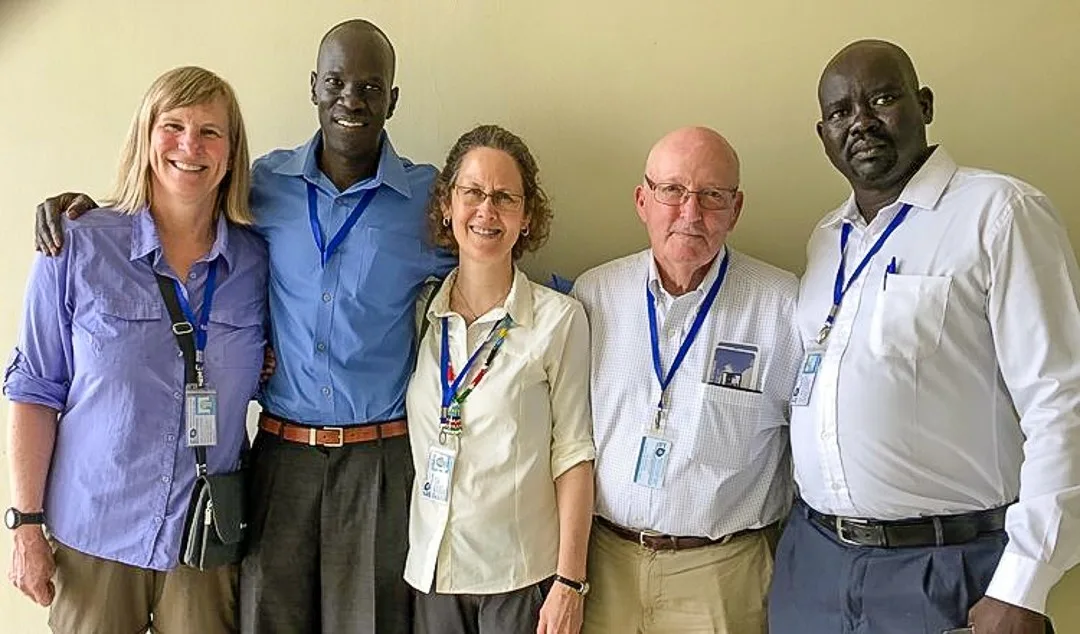
Anne: Hello! I work for TERC, a non-profit located in Cambridge, MA, that does educational research and evaluation related to STEM. Perhaps you know of their very popular Investigations math curriculum or their award-winning educational video game Zoombinis.
In my spare time I’m on the board of Water for South Sudan headquartered in Rochester, NY. I love my job, but WFSS is my passion.
For years I’ve known our founder, Salva Dut, about whose amazing and inspiring life Linda Sue Park wrote A Long Walk to Water. [Lillie’s note: All Amazon book links in this article are affiliates. Purchases through them provide a small commission at no extra expense to you.]

I fundraise actively to support our work, visiting schools and promoting the Iron Giraffe Challenge.
The Iron Giraffe Challenge is a program in which schools fundraise with things like walks for water, bake sales, and cashing in cans and bottles for deposits to try to raise $1,000.
Those who make the goal are entered into a drawing to win a visit from Salva or Skype calls with Salva, Linda Sue Park or WFSS Country Directors in South Sudan.
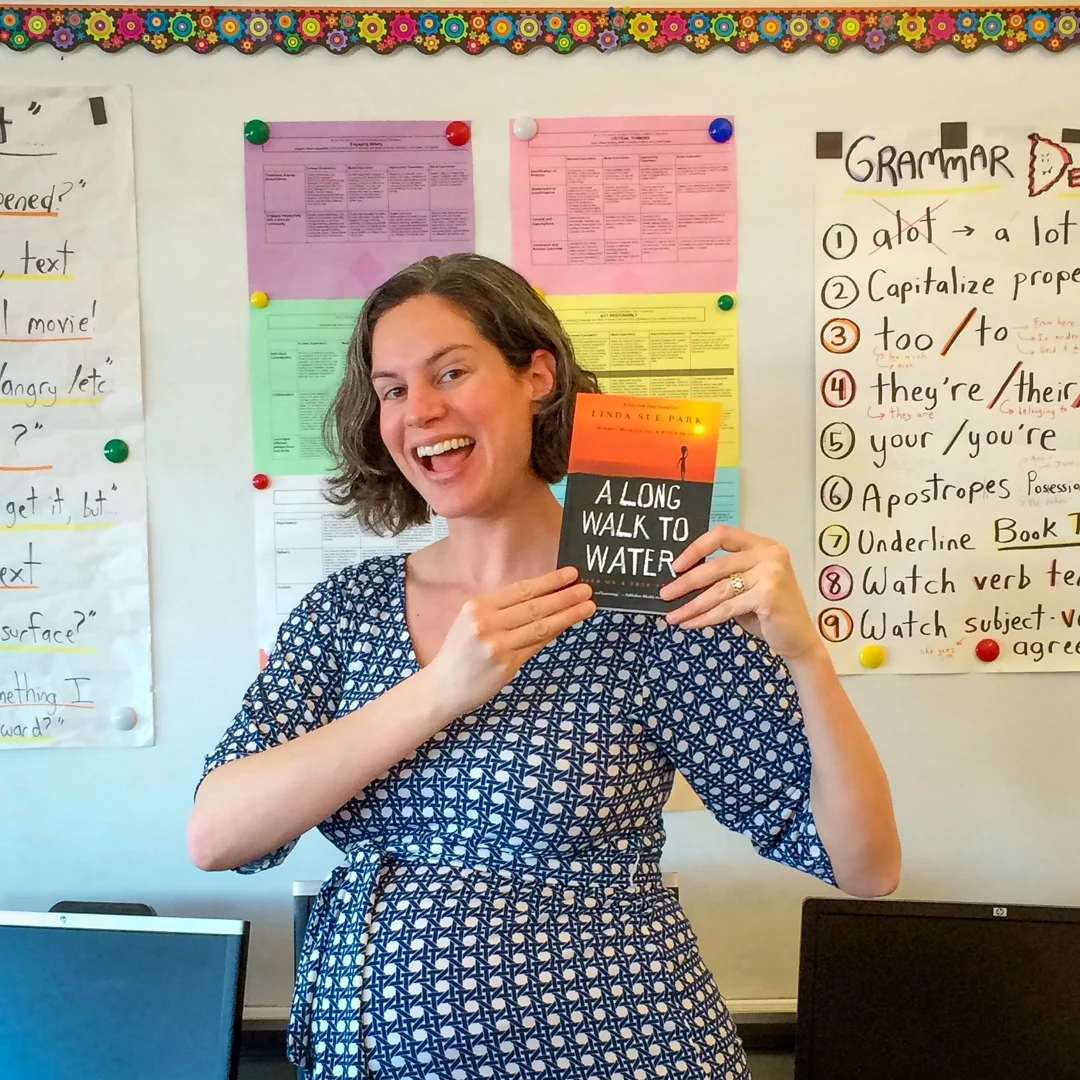
To date, 501 schools in all 50 states and 50 countries have contributed a total of over $1 million. Their money, combined with funds from other supporters, allowed us to purchase equipment, employ and train South Sudanese staff, and drill 349 bore hole wells that provide clean water to over 400,000 people!
We’ve also rehabilitated 59 older wells, provided hygiene training in 226 villages, and completed our first pilot latrine project. Needless to say, I’m proud to call Salva “brother” and be a part of this amazing organization.

TT: So wonderful and inspiring! I know my students and I have loved participating, and are awed by the work of WFSS and Salva Dut. Now, tell us more about your travels before South Sudan.
A: I’ve travelled a great deal internationally over the years. With a backpack, I toured Europe (including Russia) in college in the ‘70s, and visited the Far East (China, Hong Kong, Tokyo, South Korea) in the ’80s for work.
We honeymooned on the Amazon, travelled to Tanzania and Rwanda (where we saw the mountain gorillas and camped on the floor of the Ngorongoro Crater with the lions and other amazing creatures), Morocco, and Papua New Guinea, all before our kids were born in the 90’s.
When our kids were old enough, we took them to Costa Rica to get their feet wet, and interest piqued in exploring places that haven’t been overrun by tourists. We also wanted to expose them to new cultures and, most importantly, people who live close to the earth, have far less than we do, and understand how little it takes to be happy.
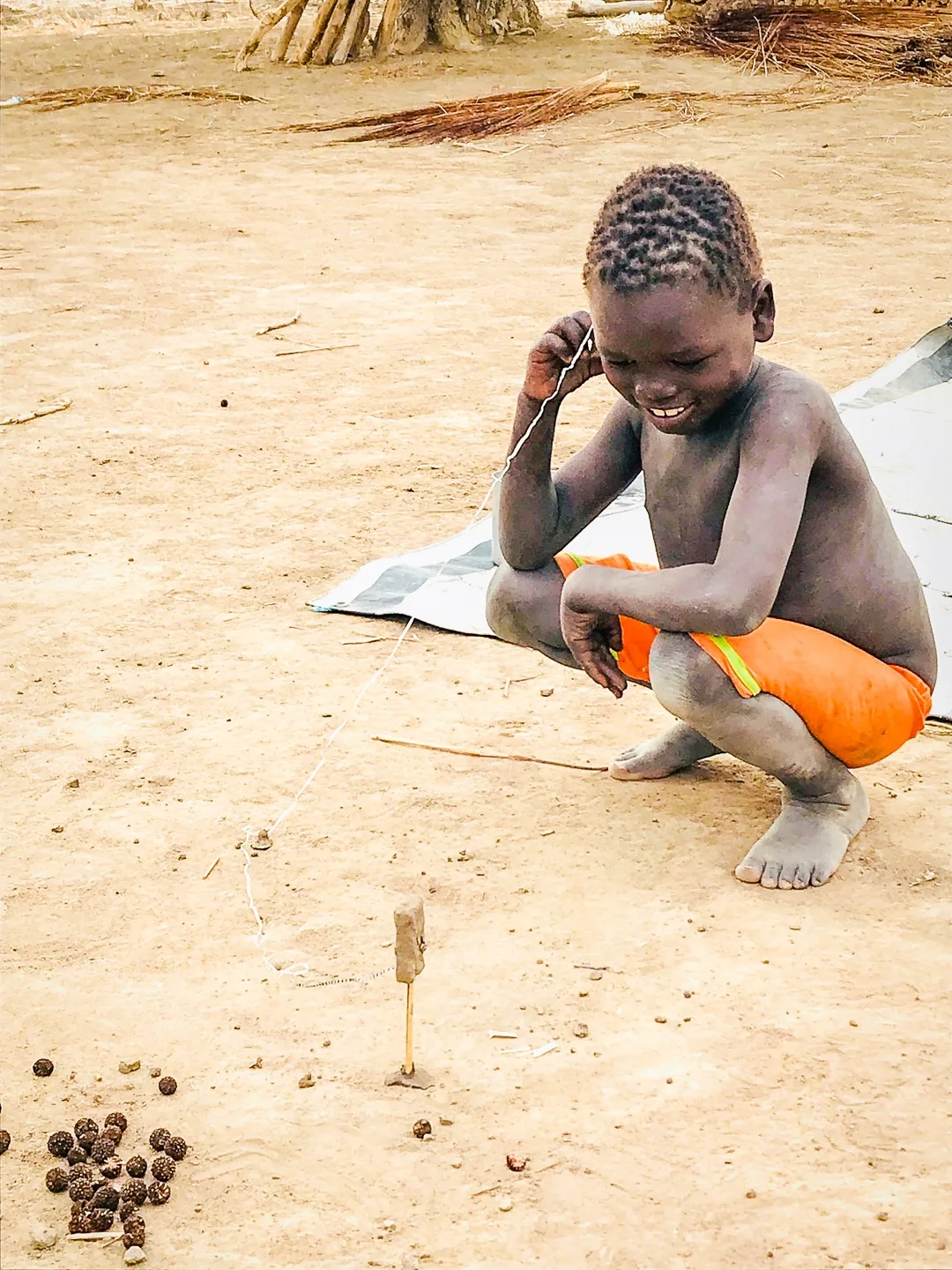
TT: So important. Now, tell us about your recent travels to South Sudan to see the work of WFSS and Salva Dut in person.
A: With all of the travels I’ve done, my recent trip to South Sudan was by far the most powerful, because while people we saw in some of these other less developed countries had very little, for the most part they were able to live off the land, fish, hunt, and grow crops.
In contrast to South Sudan, when we visited the Amazon, we observed that the people living there have plenty of food, and while there was little healthcare as we know it in the U.S., the people use herbal medicine, have clean water, and their quality of life is quite reasonable.
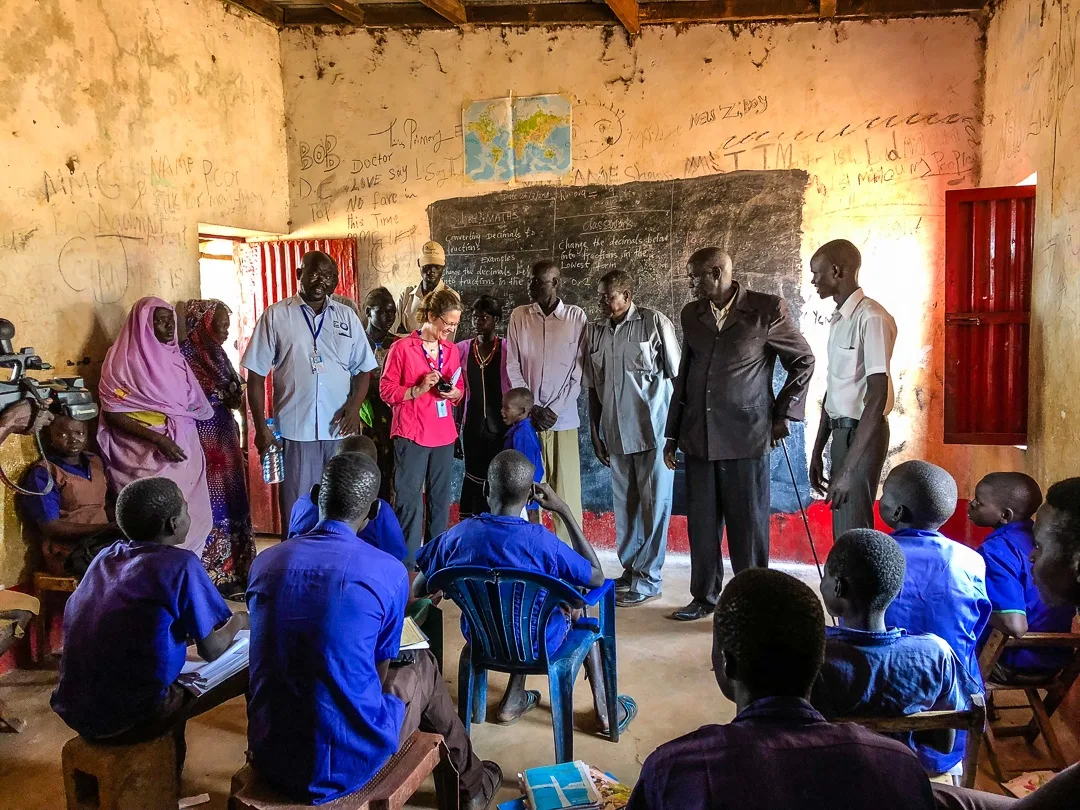
What I saw in South Sudan, however, was quite different. The newest country on the planet is in dire straits. This largely Christian country became independent in 2011, six years after an agreement that ended Africa’s longest-running civil war with what is now Sudan (predominantly Muslim).
But the fighting continues, and has turned to ethnic violence as the South Sudanese have little experience governing and tribal leaders now struggle for power. Luckily, for the most part, the fighting is away from where WFSS operates, but it’s far from safe.

Our trip to South Sudan was two weeks in length – the better part of two days of which in each direction was devoted to travel. It takes forever to get there. We flew first to Addis Ababa, Ethiopia, then continued to Juba, the current capital of South Sudan.
Looking down as we landed, we saw a few 6-10 story buildings, mostly hotels it turned out, lots of metal roofs on small dwellings, and what turned out to be large refugee camps. What weren’t visible were the many grass huts camouflaged against the dusty earth.
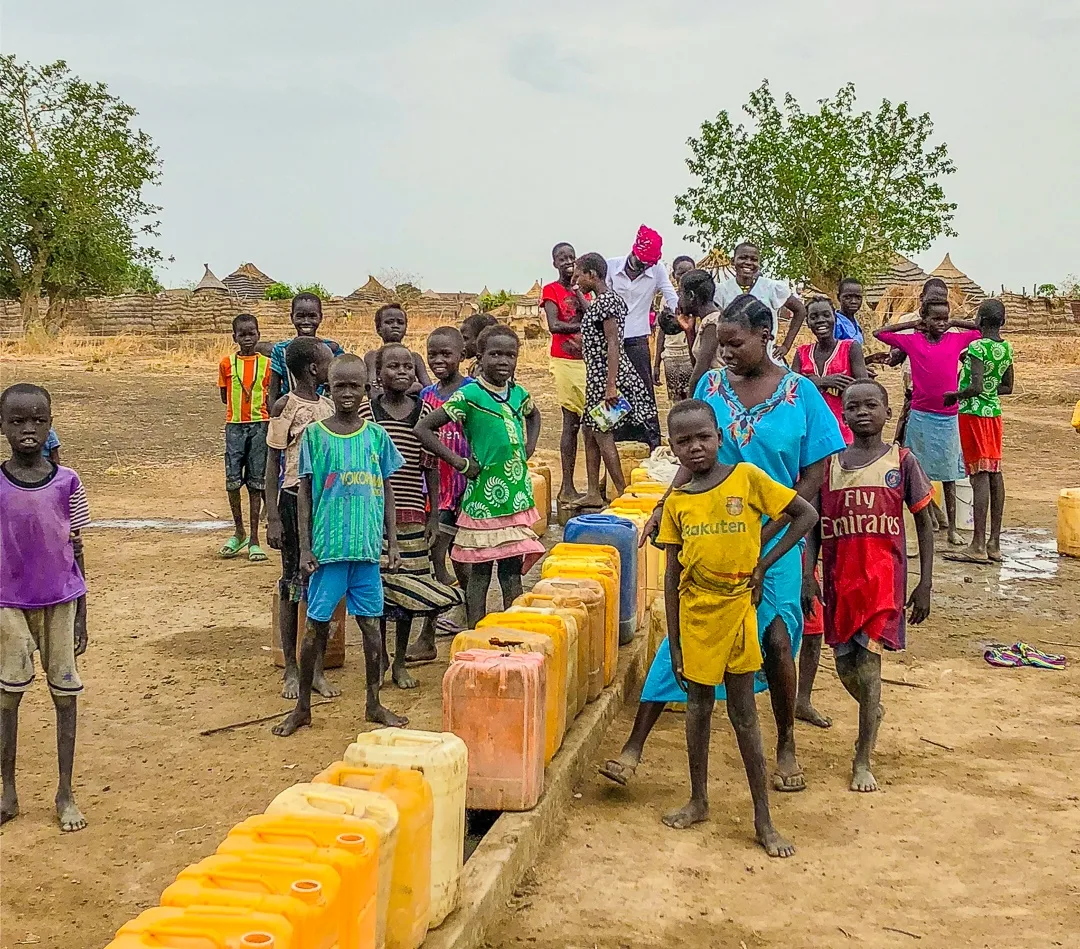
When we landed, evidence of the war was clearly visible, with armed soldiers aplenty and, quite seriously, no pictures are allowed at the airport or anywhere else where the military are present.
We drove by bullet-hole ridden buildings, and on the tarmac were several huge cargo planes belonging to the UN’s World Food Programme. The planes’ bulging bellies open to drop relief supplies — to kids and others on the ground whose stomachs also bulge from protein deficiency.
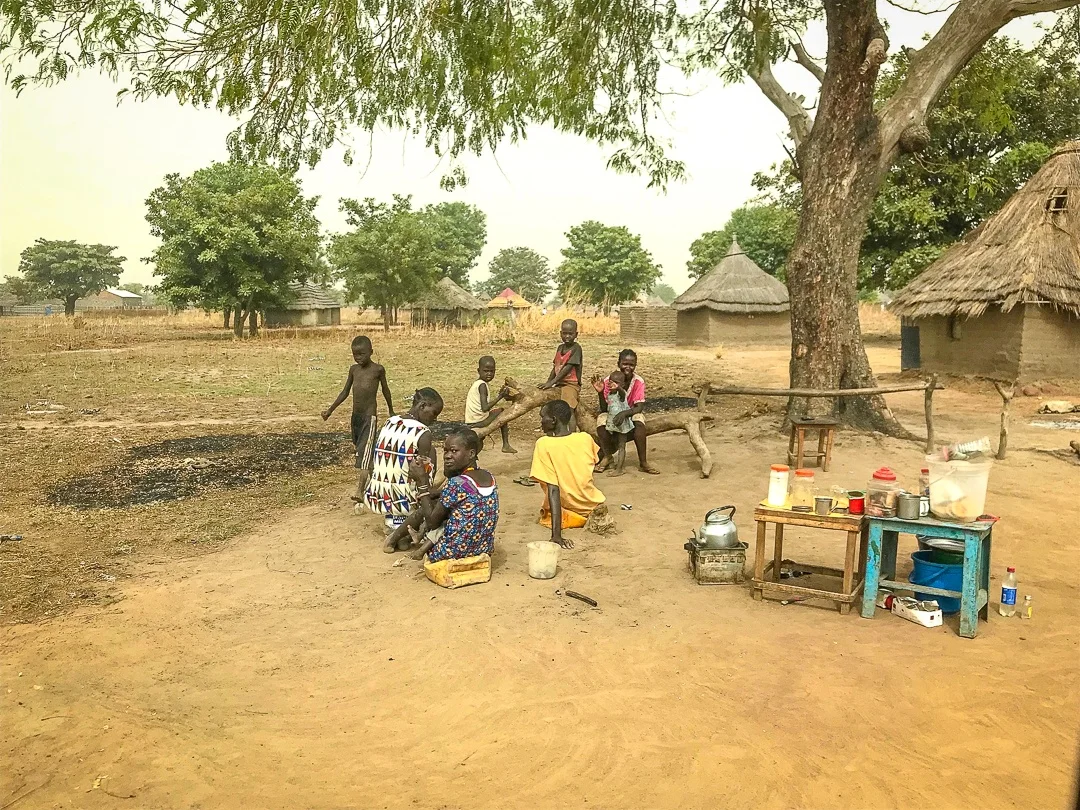
The temperature was sweltering – well over 100 during the day, dropping to 85ish at night. (It’s the same during the rainy season – just even more humid!) We had to wear long pants, sleeves and big hats to protect us from the sun, so riding in the vehicles was a real air-conditioned treat.
In Juba, we stayed in a 4-star hotel quite near the President’s compound. (The equivalent here would be 2 stars.) Pictures out of the windows were therefore forbidden. We peeked out at the people who lived outside the walled and barbed-wired hotel perimeter in what we’d call shanties. The structures were made of woven straw or brick, sometimes finished with stucco, and covered with sheet metal or tarps.
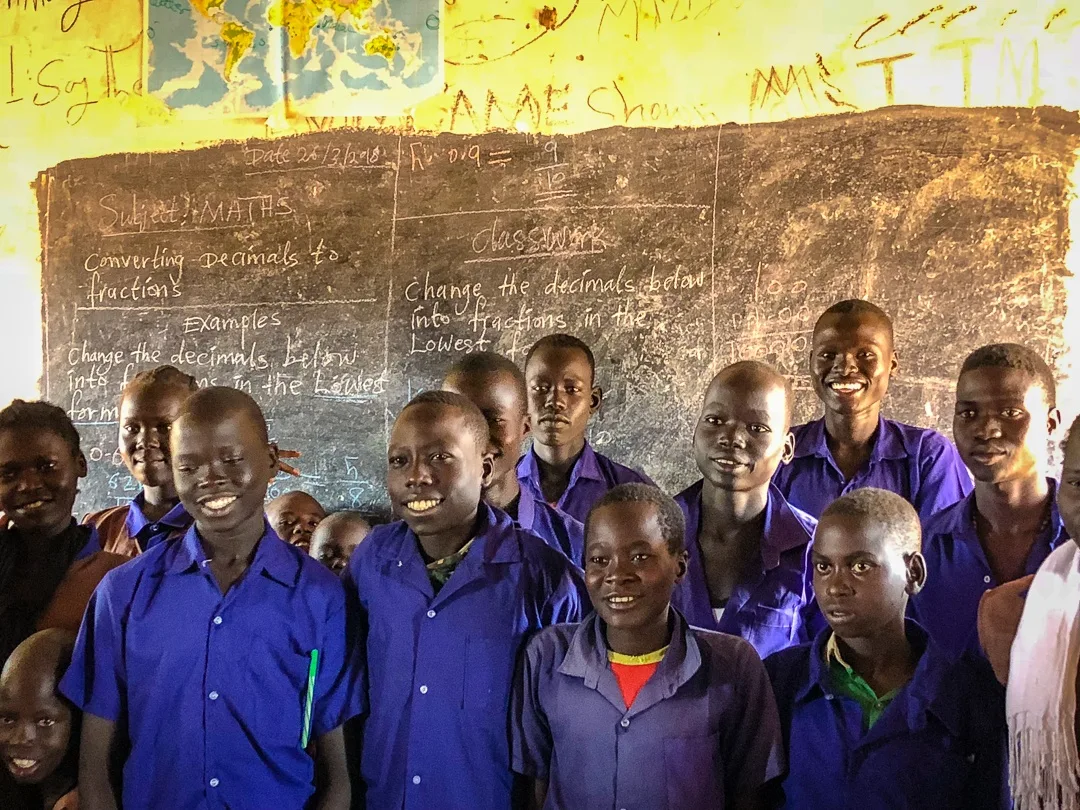
What was amazing was how clean everyone’s clothes were: pressed and white. Their school uniforms were neat and tidy, even though there is no running water or electricity to speak of. Are there laundries, perhaps, that we didn’t see?
In Juba, we visited several governmental offices and met with other NGOs (non-governmental organizations), looking to raise our visibility and identify collaborations.
At each meeting, we had to pass through armed guards, security gates with peek holes, and hand in our government-issued IDs. It felt safe enough, though seeing trucks and jeeps full of AK47-armed soldiers was disconcerting. Those on the street don’t flinch like we did.
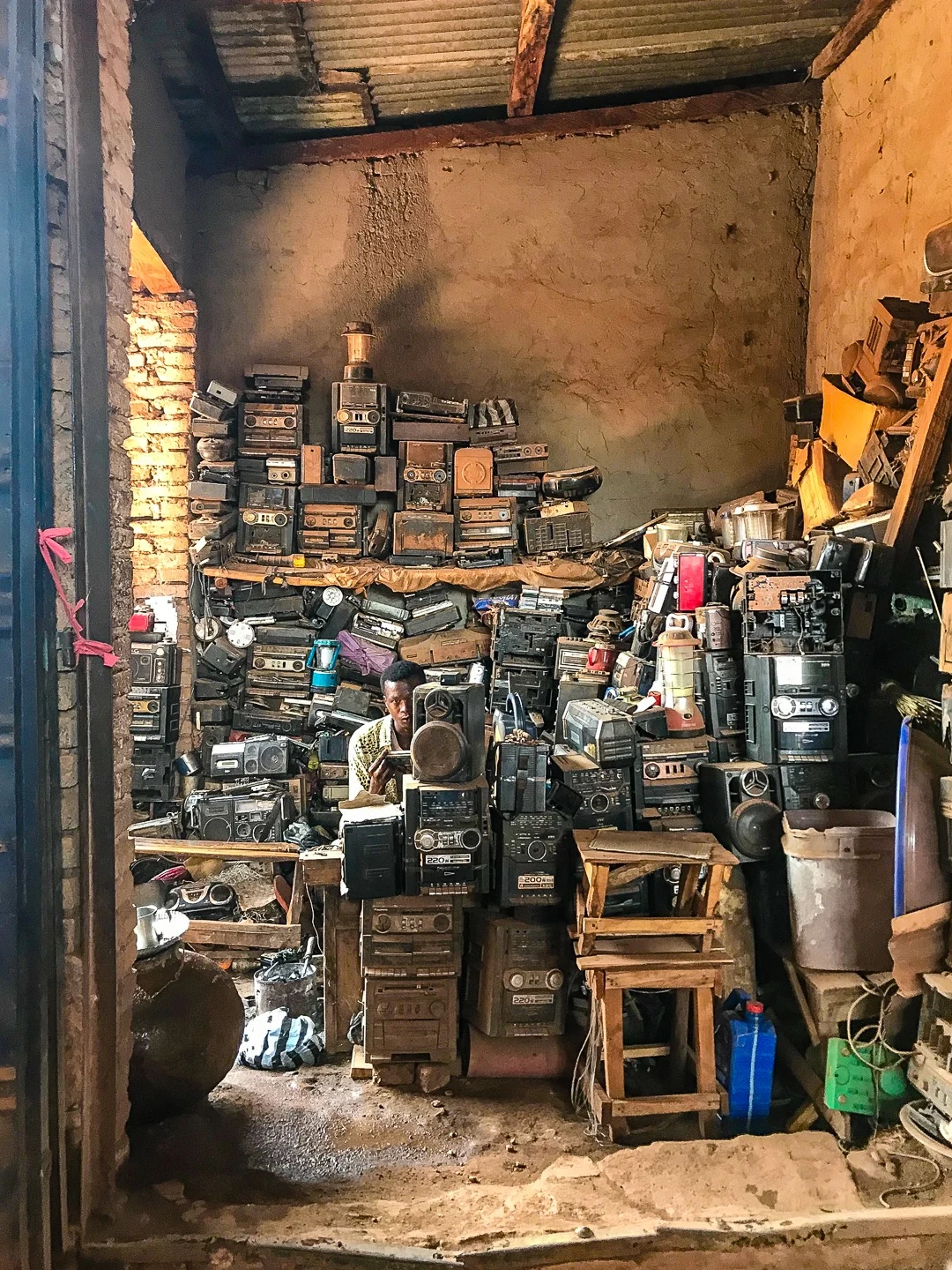
Our next stop was Wau, 400 miles to the northeast, where Water for South Sudan operates our compound. It’s a 1-hour flight versus several days to drive, as the roads are unpaved, and frankly unsafe due largely to banditry.
The current fighting isn’t generally in this area, and hasn’t been for several years, but our entirely South Sudanese staff is constantly on alert, and there’s a robust NGO community that meets and shares news of any safety issues electronically. Everyone has an evacuation plan.
Wau is the second largest city, and it struck me a bit like the equivalent of what a western pioneer town in the U.S. might have been like during stage coach times.
There’s one short paved road – though it’s in terrible shape due to the heavy rains, and getting black top is nearly impossible. (Thankfully the runways are well paved.) Scrawny cattle and goats share the roads with motor bikes, donkey-pulled water delivery carts, and Land Rover like vehicles – mostly owned by the NGOs.

Petrol is peddled in one liter bottles beside the road. We visited the markets, and what’s for sale is quite basic: only things that are needed for daily life, and all imported since there’s very little manufacturing. Even handicrafts are hard to find, since people have little to no spare time or raw materials.
We saw grains, lots of onions, some spices, and some dried meat and fish, but not much of the latter. This time of year the rivers are largely dried up, and everyone and everything is barely hanging on. People eagerly await the rainy season so the grasses will sprout for the animals and so they can make thatch. Those who have a plot of land try to urge forth small gardens.
We saw many more women and children than men, which was puzzling. It is their custom to have more than one wife, and many are probably off fighting, so perhaps that explains it.
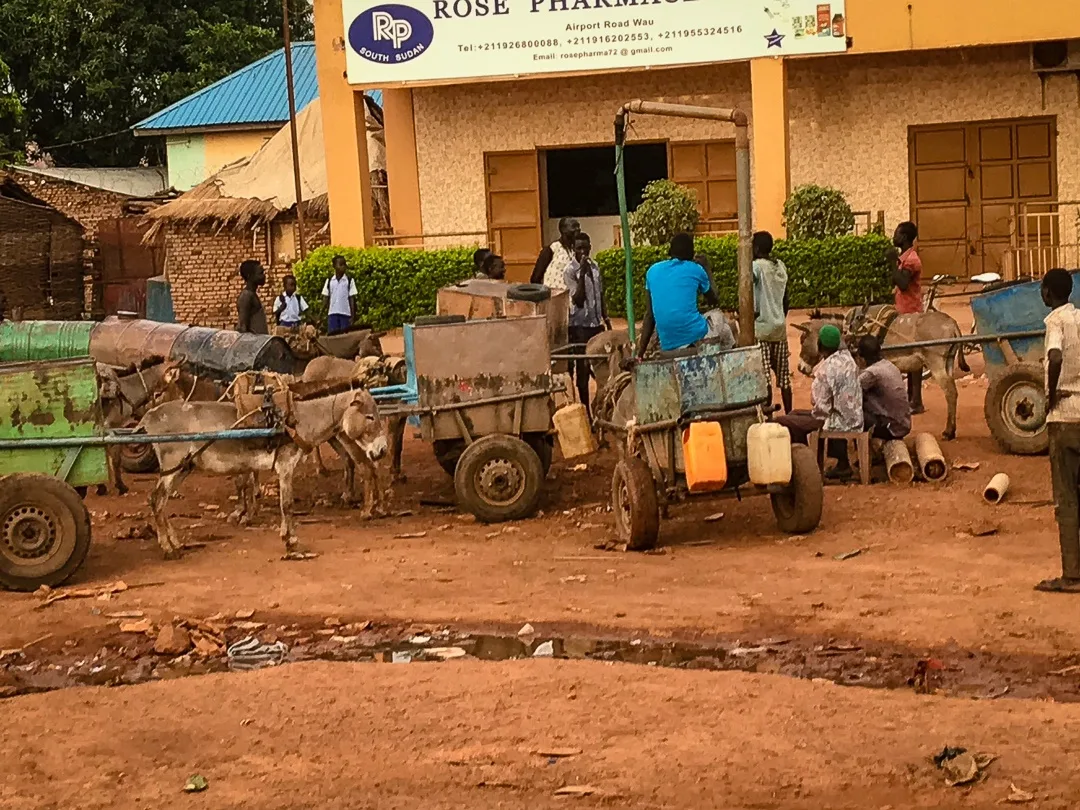
TT: What were highlights of your South Sudan travels?
A: There were two highlights of the visit. The first was watching our WFSS crew, with help from the local villagers, drill a well. It took us 4 hours to go the 100 miles over deeply rutted dirt roads to the village we selected.
There we set up camp under the lone large shade tree down the “road” from where we’d drilled a well previously. From dawn to dark there was line of women and children waiting to fill their jerry cans — just one of several trips they’d make each day.
Our cooks made rice and porridge for breakfast, rice and beans and sometimes greens for lunch and dinner, and either rolls or Ethiopian style bread – all made over the fire for each meal. There was little meat.
We watched as our South Sudanese team drilled the 100+ meters down to reach the aquifer that sits below these desperate people. The villagers helped dig the trench that lets the animals access the water away from the pump and bore hole, and watched as our team set up the concrete forms, mixed and poured the cement to make it durable.
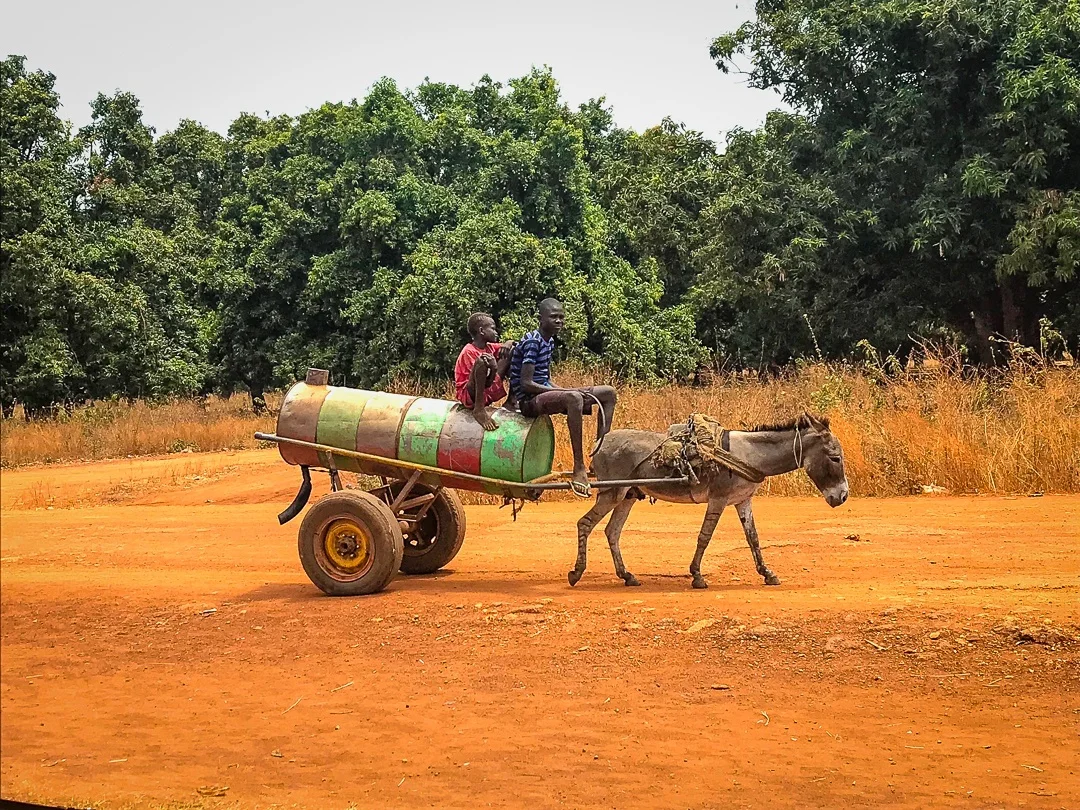
Under the trees nearby, our hygiene team taught the chief-appointed villagers all about hand and food washing and the impact of open defecation. The women were taught a bit about feminine hygiene – though there are no supplies. These will be the stewards of the well and teach the others.
The second highlight was our visit to the Zogolona School near Wau where we were welcomed with great enthusiasm, not just by the children, their teachers and the head of their PTO, but also by Health Minister, Deputy of the South Sudan Relief and Rehabilitation Commission (SSRRC), Deputy Village Chief and Deputy Mayor.
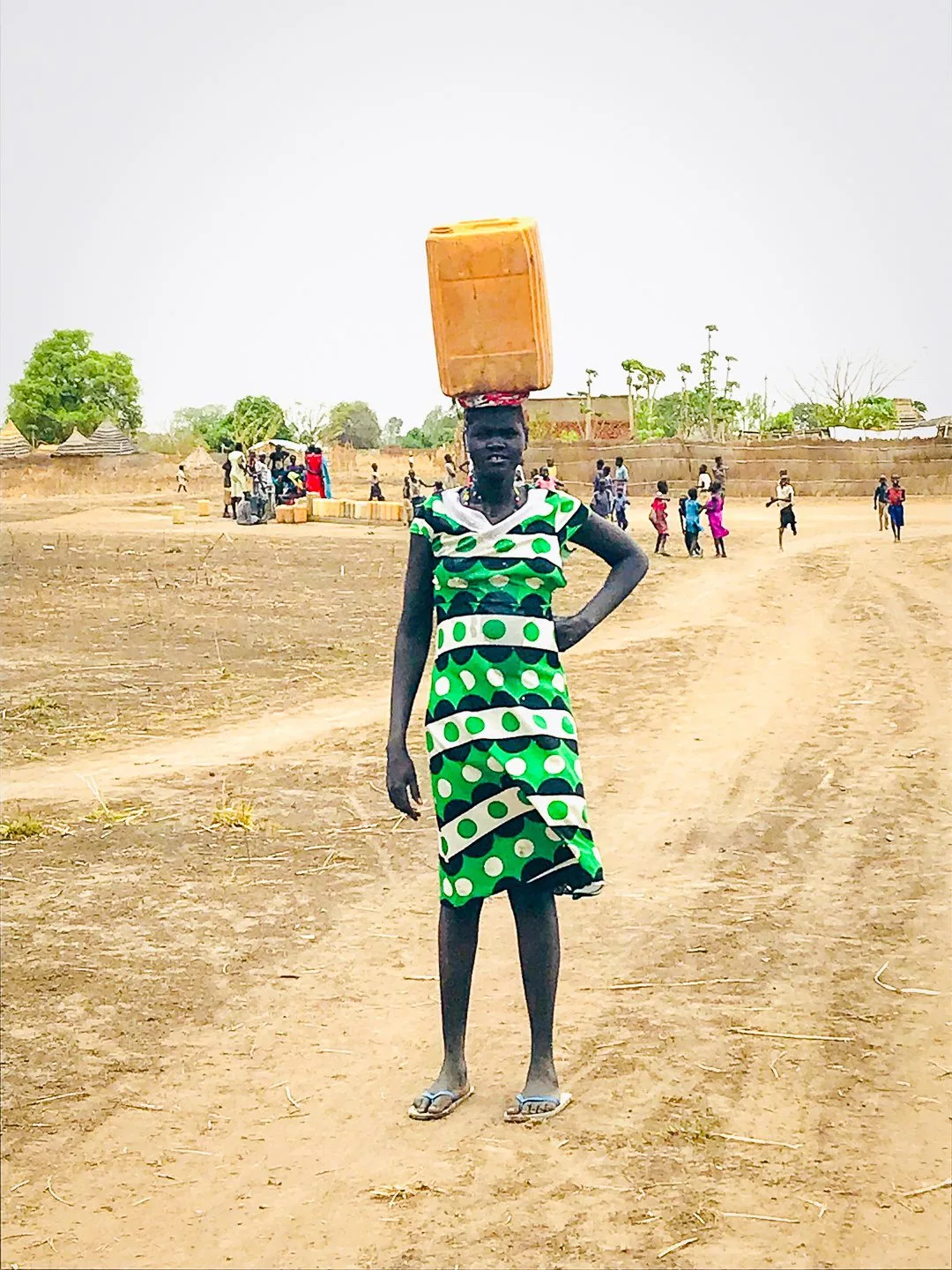
We were celebrated because we just built them a 6-hole latrine, plus several urinals to support their 800 students! Previously, they had to walk into the bush and squat – easily 30 minutes round trip. Talk about disrupting classrooms.
The school consists of 4 “buildings”: an administrative building with two rooms, another with two classrooms, a third with storage and a kitchen, and the last with no walls, just uprights made from twisted tree trunks and thatch and a tarped roof.

The other “classrooms” were under the few nearby shade trees. The buildings were in terrible disrepair, with holes in the roofs, but at least there was some shade. There were just a few chairs for some of the older students, with very few books, so the blackboards were critical.
Teachers are paid very little, and in fact many volunteer, but the students were attentive and well mannered, and many were in clean school uniforms. Not surprisingly, there were many more boys than girls – but there were some girls!
Most exciting of all was the news that because Water for South Sudan had drilled a well in the schoolyard, and was now building latrines, the World Food Programme decided to provide every student with a meal each day – and a cook to prepare it!
I can’t tell you my pride at seeing how, starting with the most fundamental need – clean water, we’re now watering the seeds of change.
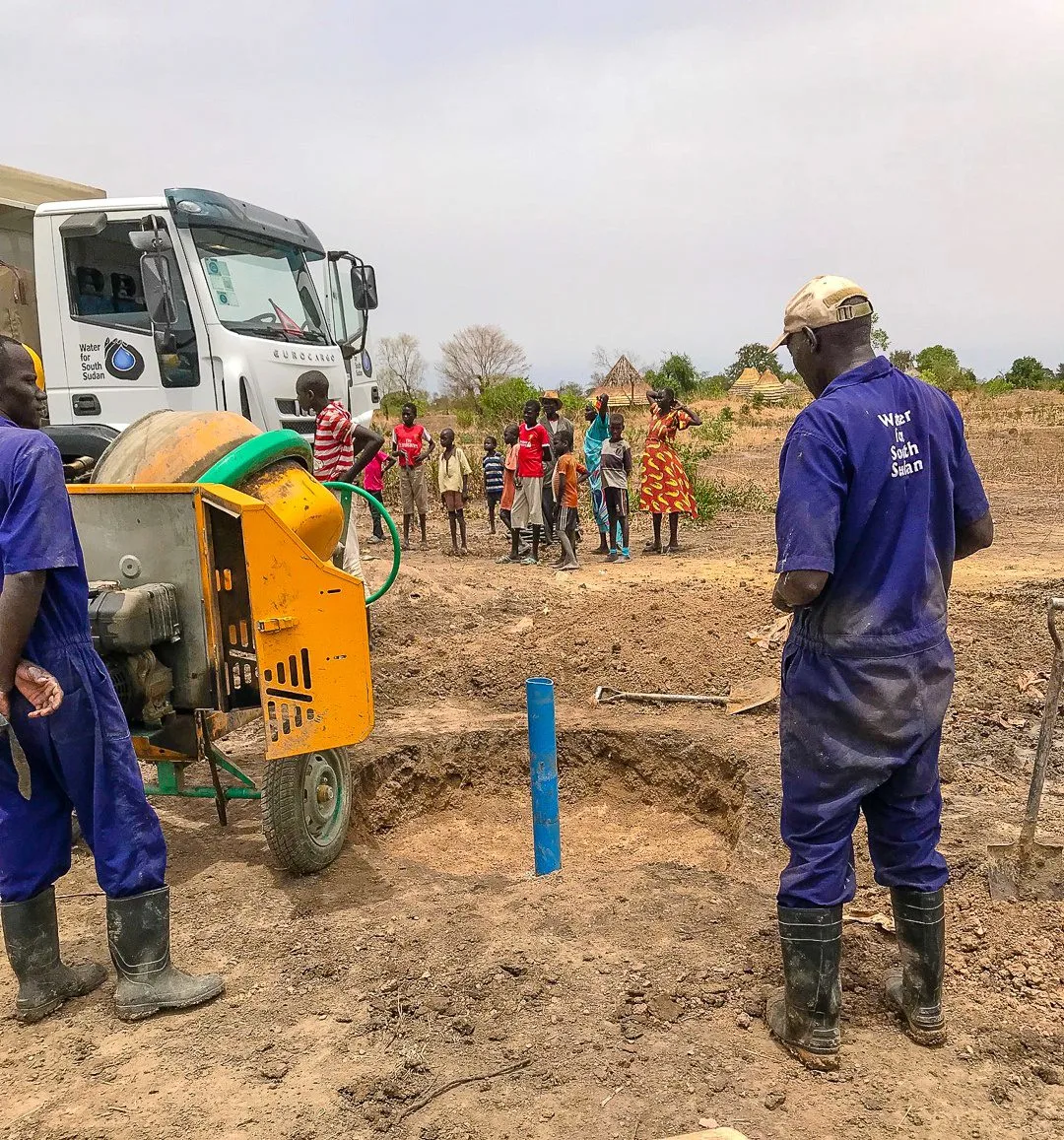
TT: Thank you so much for sharing those details. What was the most powerful moment?
A: The most powerful moment by far was watching the clean water gush from the ground from the new well, and see the exuberant faces of the villagers who had watched our progress over the previous days.
If it hadn’t been so hot, they would have been jumping for joy! A thank you gift of a goat for dinner was enjoyed heartily by our South Sudanese team.
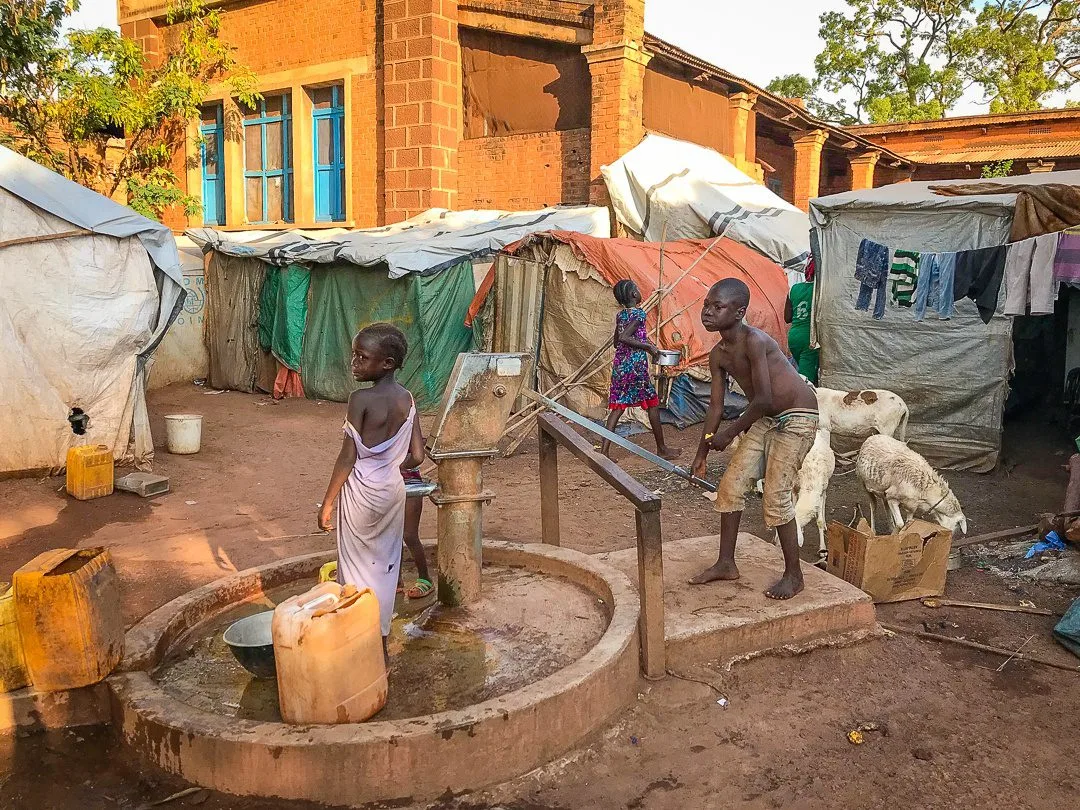
TT: Ah! How have your travels impacted you in your career, and as a person?
A: My husband and I have always prioritized our destinations based on areas that were relatively undeveloped, and that 20-30 years later would be entirely different.
I suppose that orientation, and my values generally, made me all the more interested in helping Water for South Sudan, and visiting to understand first-hand the need, and our work to address it.
I came away all the more committed to the WFSS mission, and the importance of not just helping the people there, but in developing their skills so that they can help themselves and become increasingly independent and self-sustaining.
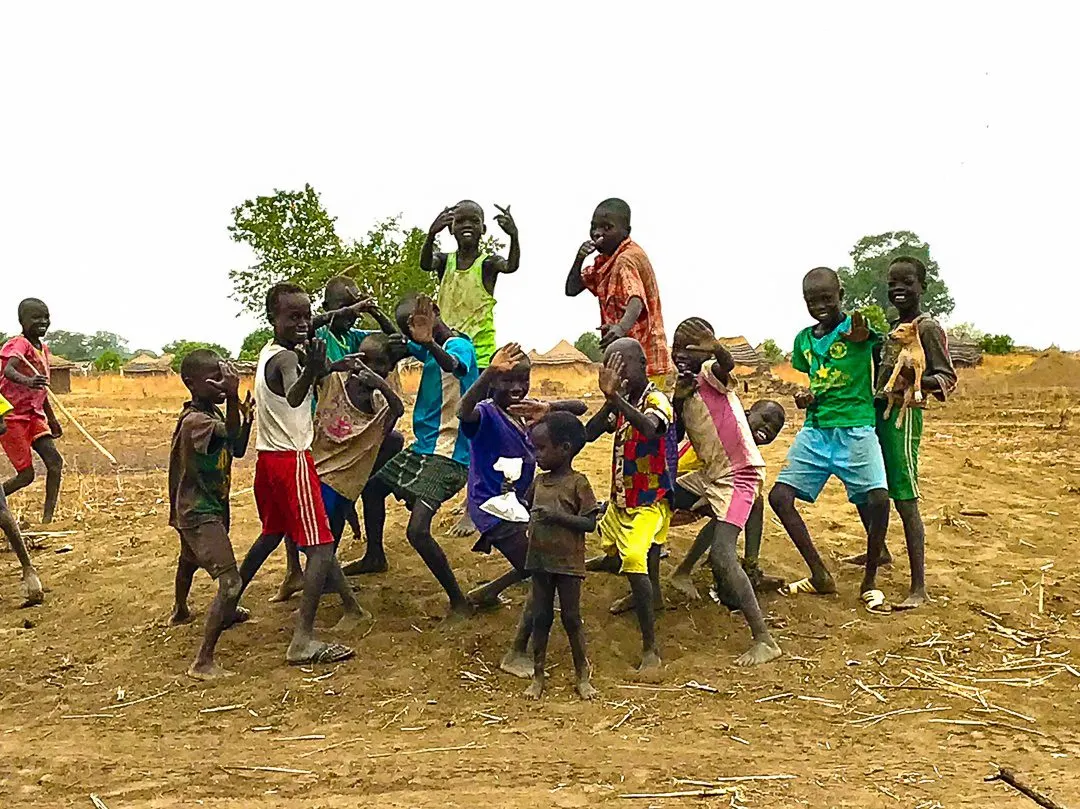
TT: Yes! What advice do you have for teachers who are dreaming of travel, or travelers dreaming of teaching?
A: There is nothing more valuable than seeing how other people live, understanding how lucky almost all of us are on a relative basis, getting out of our comfort zones, and reflecting on what’s important – really important.
Go far, and as often as you are able!
TT: Thanks so much, Anne! Readers, what questions or comments do you have?
2019 Update:
I (Lillie Marshall) had the honor of meeting Salva Dut in person during October of 2019 in Boston and to hear him speak live about his work in South Sudan. I can now attest that Salva is every bit as passionate, smart, hard-working, effective, and genuine as he comes across in A Long Walk to Water!
What I didn’t realize from the book, however, was what a great sense of humor Salva has. It was a joy to speak with him and hear more about his work! I can see why Salva has inspired Anne — and countless others — so much, and I hope we can all continue to support the wonderful work of Water for South Sudan.
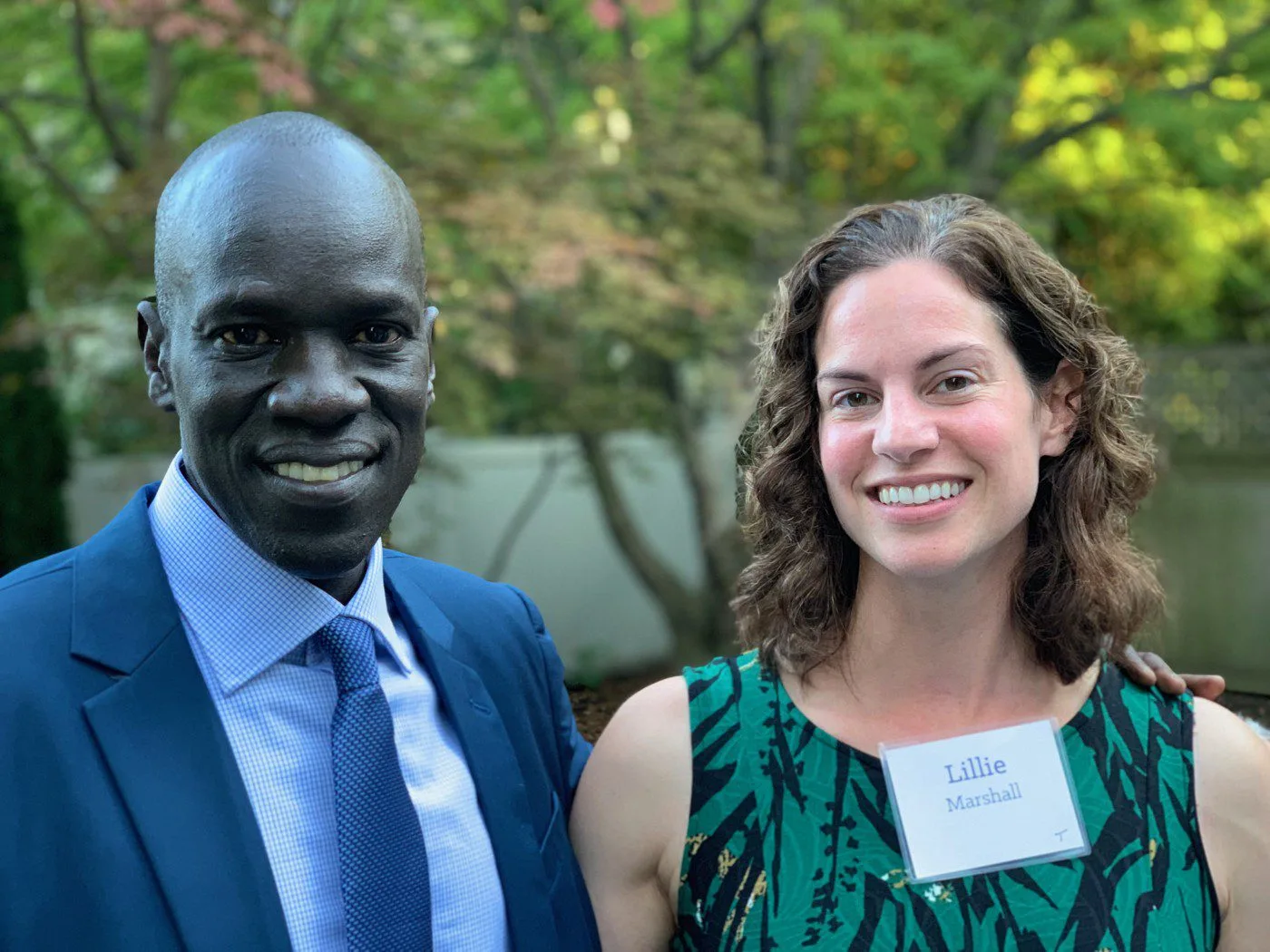
If you’ve read A Long Walk to Water or followed the work of Salva Dut and WFSS, do share your experience!

I know my class is looking forward to participating again this year, and we hope to have you join us in this important work.
Enjoyed A Long Walk to Water and want another young adult or middle school book suggestion? Try Look Both Ways by Jason Reynolds!
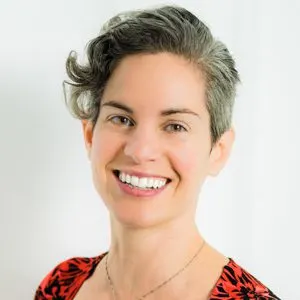
The author, Lillie Marshall, is a 6-foot-tall National Board Certified Teacher of English from Boston who has been a public school educator since 2003. She launched TeachingTraveling.com in 2010 to share expert global education resources, and over 1.6 million readers have visited over the past decade. Lillie also runs AroundTheWorld L.com Travel and Life Blog, and DrawingsOf.com for educational art. Do stay in touch via subscribing to her monthly newsletter, and following @WorldLillie on social media!

Ariana
Tuesday 21st of August 2018
Thanks for documenting such an inspiring story and the good work of this organisation. It is so important to share stories such as these!
Dawn
Monday 20th of August 2018
What an inspirational read! I am going to pick this book up for my 11 year old right now.
Anne
Tuesday 21st of August 2018
That's wonderful Dawn but do read it along side. There are parts that are emotionally challenging for some kids - though kids from all 50 states and 50 countries have not only read it but fundraised to help us drill wells so girls like Nya can go to school.
Lillie Marshall
Monday 20th of August 2018
That is great to hear! I also highly recommend the Audible audio book version. In my classroom, we listen while we read along, then pause for small and large-group discussions. Through this method, we all reach the surprise twist at the end together, and it's amazing to be in the room when all the kids scream, "OH MY GOSH!"
Anne
Saturday 18th of August 2018
So proud and honored to have been invited to write about my trip to South Sudan this spring. Thanks Lillie for your interest, support, enthusiam and especially for providing your students, and now so many others, with the awareness of the importance of clean water.
Lillie Marshall
Saturday 18th of August 2018
Thank YOU for taking the time to do this interview so others who cannot travel to South Sudan in person can see the work of WFSS and understand the opportunity of getting involved from back home!